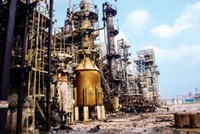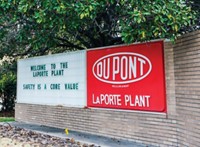Advertisement
Grab your lab coat. Let's get started
Welcome!
Welcome!
Create an account below to get 6 C&EN articles per month, receive newsletters and more - all free.
It seems this is your first time logging in online. Please enter the following information to continue.
As an ACS member you automatically get access to this site. All we need is few more details to create your reading experience.
Not you? Sign in with a different account.
Not you? Sign in with a different account.
ERROR 1
ERROR 1
ERROR 2
ERROR 2
ERROR 2
ERROR 2
ERROR 2
Password and Confirm password must match.
If you have an ACS member number, please enter it here so we can link this account to your membership. (optional)
ERROR 2
ACS values your privacy. By submitting your information, you are gaining access to C&EN and subscribing to our weekly newsletter. We use the information you provide to make your reading experience better, and we will never sell your data to third party members.
Safety
U.S. Investigates Bayer Plant Blast
Federal officials look for cause of fatal explosion
by Glenn Hess
September 8, 2008
| A version of this story appeared in
Volume 86, Issue 36
FEDERAL INVESTIGATORS have begun examining the Aug. 28 explosion and fire at the Bayer CropScience plant in Institute, W.Va., that killed one worker and severely burned another. The facility, one of many located in West Virginia's Kanawha Valley chemical corridor, produces crop protection chemicals.
John Bresland, chairman of the Chemical Safety & Hazard Investigation Board (CSB), says it could take up to a year to complete the inquiry into the cause of the massive blast, which was felt several miles away in Charleston.
"CSB is very concerned about an incident of this type because it took a life and had the potential for taking even more lives," Bresland remarks.
The explosion occurred in a section of the sprawling complex where Bayer makes the pesticide methomyl, which is used to produce thiodicarb, a carbamate insecticide marketed under the trade name Larvin.
Officials believe the blast involved a 4,000-gal tank that contained various waste products related to the manufacture of Larvin, including methyl isobutyl ketone, a highly flammable solvent, as well as hexane and dimethyl disulfide.
"It was bad, but it could have been worse," says Mike Dorsey, chief of homeland security and emergency management for the West Virginia Department of Environmental Protection. "What you had was a huge amount of fuel, so there was a really big fire."
Bayer says the unit is shut down and "will not be restarted in the future until its safe operation can be completely assured."
After CSB wraps up its investigation, OSHA will evaluate the findings and determine whether any federal safety standards were violated.
In 2005, OSHA cited Bayer for multiple process safety deficiencies after an inspection of the Institute plant. The company paid $110,000 in fines to settle the case and promised to take corrective action. OSHA most recently inspected the facility in October 2007 and did not issue any citations.
The last fatal chemical plant accident in the valley also occurred at the Institute complex. In 1994, an explosion at the plant, then owned by Rhône-Poulenc, killed one worker and a second died a decade later from injuries sustained in the accident.




Join the conversation
Contact the reporter
Submit a Letter to the Editor for publication
Engage with us on Twitter